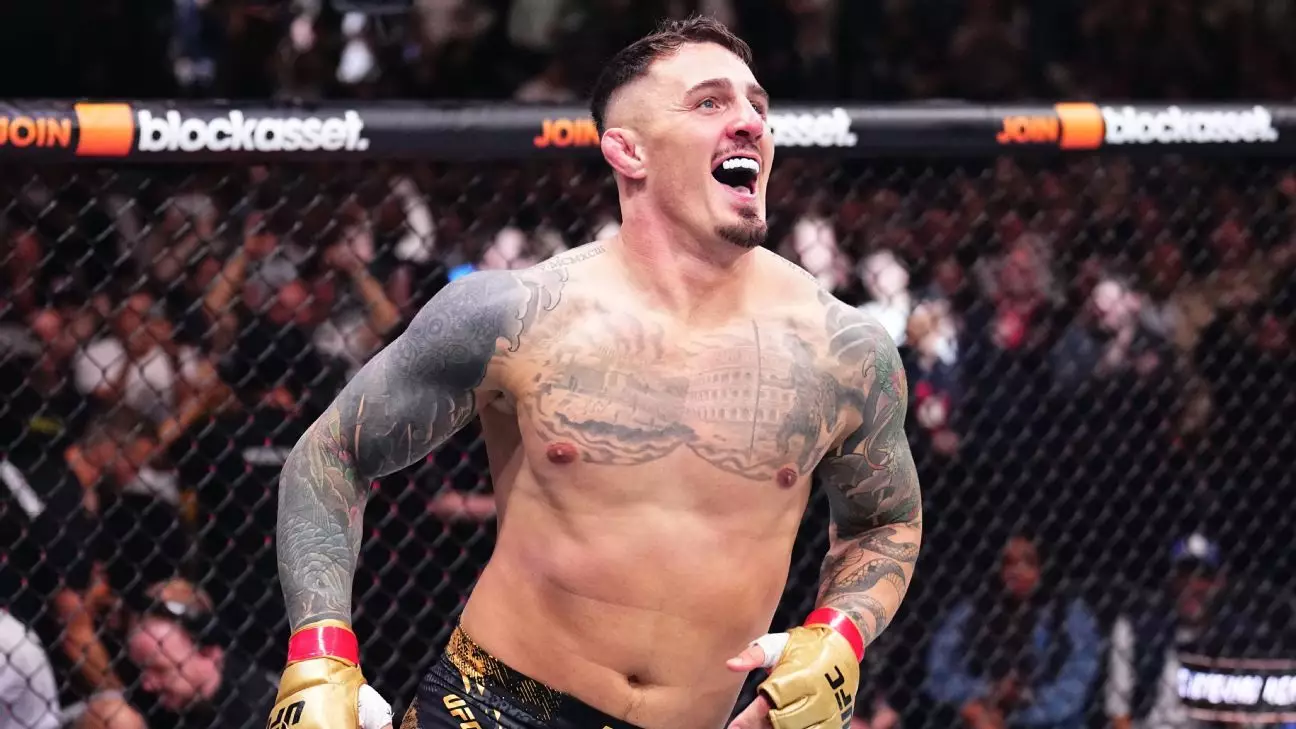The heavyweight division of the UFC often lives on the edge—where one punch can shift the entire landscape in an instant. With the recent retirement of Jon Jones, the division finds itself at a crossroads, ripe with unfulfilled potential and looming questions. Jones, widely regarded as the greatest of all time, concluded his legendary career under circumstances that left fans and critics alike pondering what could have been. His long, drawn-out departure, paired with unfulfilled titles and postponed fights, has cast a shadow over the division’s future prospects. Yet, amidst the uncertainty, new challengers are beginning to emerge, demanding attention and heralding a possible renaissance.
This weekend’s headline fight between Derrick Lewis and Tallison Teixeira might seem like just another bout on paper. However, this clash symbolizes a much broader shift—one that could define the next chapter of heavyweight MMA. Whether the division can escape the stagnation left in Jones’ wake depends greatly on how emerging stars step up and how the UFC chooses to shape this new era.
The Absence of a Clear Queen: The Heavyweight Power Vacuum
The heavyweight weight class, historically dubbed “the graveyard of champions,” is notorious for its unpredictability. Every contender possesses formidable one-punch knockout power, and champions have traditionally fought to defend their titles against relentless assaults. Yet, the division currently lacks a definitive frontrunner—a figure with both the talent and the star power to command the division’s narrative.
With Jon Jones retired, the title picture is muddled. Aspinall, the newly crowned undisputed champion, has impressed with his sharp, first-round finishes. His victories over top-ranked opponents like Curtis Blaydes and Sergei Pavlovich showcase a high level of skill and decisiveness—traits that could sustain his reign for a significant period. At just 30 years old, Aspinall’s youth and athleticism give him a window of dominance, but the division’s depth remains questionable.
The problem is that Aspinall’s rapid ascent, while impressive, leaves a gap — an absence of challengers with the experience, power, and star appeal necessary to elevate the division. Fighters like Ciryl Gane possess raw talent and potential, but they haven’t consistently demonstrated the consistency or knockout prowess that might threaten Aspinall’s ascent. Without a roster of compelling contenders, the heavyweight division risks becoming a landscape of brief, predictable title reigns, lacking the drama and unpredictability fans crave.
Potential Sparks: Rivalries That Could Ignite the Division
The UFC must find ways to invigorate this division—introducing rivalries that can capture public imagination and push the division forward. Perhaps the most promising potential comes from a rivalry that’s not yet materialized but feels inevitable: Aspinall versus Gane. Both fighters are young, talented, and capable of putting on technical masterpieces. Their contrasting styles—Aspinall’s relentless pressure versus Gane’s slick striking—could produce one of the division’s marquee matchups, reinvigorating fan interest and adding a new layer of narrative depth.
But the more tantalizing prospect would be a high-profile superfight between Aspinall and Alex Pereira. Pereira, a former champion at middleweight and light heavyweight, carries with him an aura of knockout threat and speculative star power. A clash between Aspinall and Pereira could serve as the division’s shot in the arm—an injection of fresh energy that reminds everyone why heavyweight MMA is still a spectacle beyond just knockout statistics.
However, the challenge with Pereira is size—he’s naturally undersized compared to traditional heavyweights—and his journey back from middleweight might not translate into an immediate title shot. Still, in MMA, size isn’t everything; what matters is the story, the payoff, and the theatrics. The UFC’s matchmaking creativity will be crucial in crafting bouts that not only showcase skill but also ignite excitement and bring the division into a new, more thrilling chapter.
The Rising Stars and the Search for the Next Big Thing
While Aspinall continues to impress with a streak of finishes, the division lacks the requisite depth to sustain long-term dominance. Enter Tallison Teixeira, a sprightly 25-year-old with a reputation for finishing opponents early. His eight first-round finishes signal raw power and aggressiveness, qualities that could be the antidote to the division’s current predictability. If Teixeira can translate his early success into sustained competition against the division’s top-tier fighters, he may represent the future.
On the veteran front, Derrick Lewis remains a fan favorite and a danger to anyone in the division. If he manages to secure a spectacular knockout this weekend, it could reignite fan interest and open pathways for him to challenge for the title again, despite ranking lower. Lewis embodies everything that makes heavyweight MMA compelling: raw strength, unpredictability, and the potential for instant chaos.
Meanwhile, the absence of Jones has left a vacuum not just in the title picture but in the division’s cultural relevance. Jones’ dominance and ability to draw pay-per-view numbers elevated the heavyweight category into the mainstream spotlight. Without him, the UFC must focus on developing homegrown talent that can sustain interest without relying solely on star power. This is where fighters like Aspinall, Gane, Teixeira, and emerging contenders could redefine the division’s legacy.
The Future of Heavyweight MMA: Building a Powerhouse
Looking ahead, the heavyweight division’s future hinges on strategic matchmaking and the cultivation of new stars. The division’s history is built on unpredictability—where one punch can alter history. However, that chaos needs to be channeled into compelling

